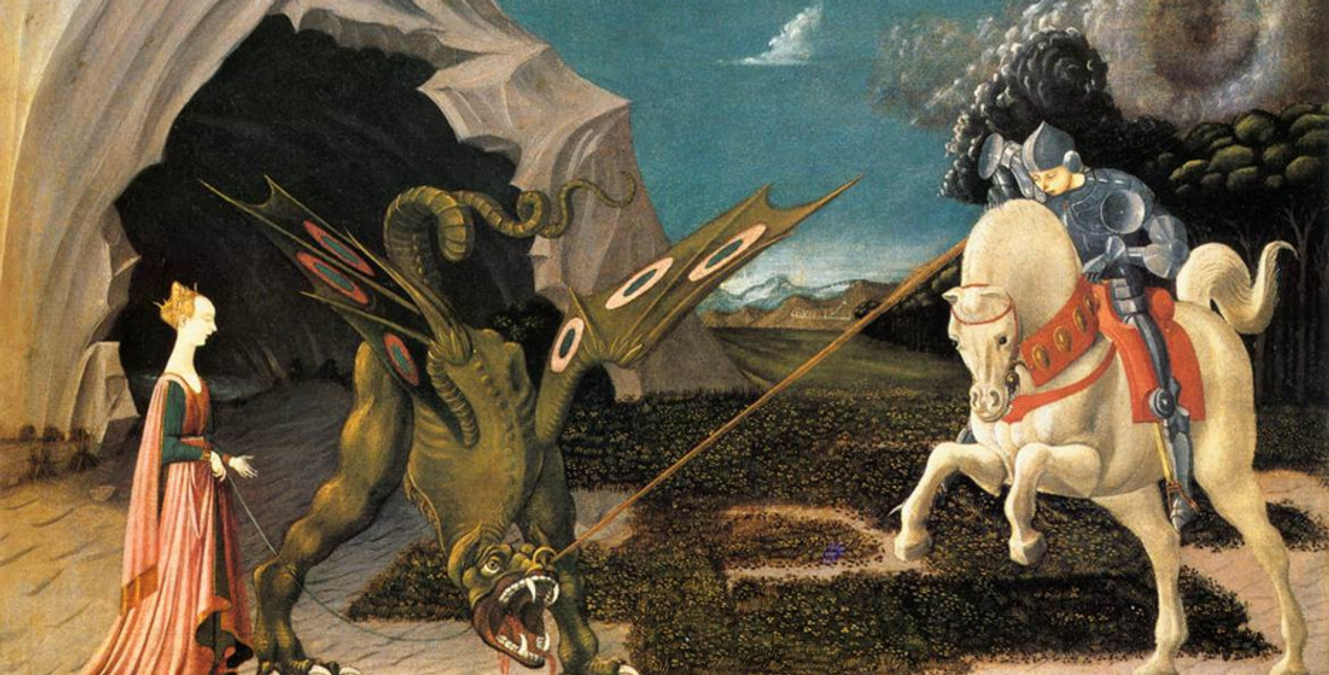St. George was a cavalryman in the Roman army at Lydda, now in modern-day Israel. He was a Christian at a time when Rome was ruled by the emperor Diocletian, who was anti-Christian.
He refused to make sacrifices to the Roman gods. As a result, he was tortured over several years and eventually suffered a martyr’s death, when he was beheaded in 303 AD.
He began to be venerated around the fifth century when a monastery was built and dedicated to him in Jerusalem.
St George is the patron saint of England, Portugal, Georgia, Serbia, Bulgaria, Bosnia and Herzegovina, the Republic of Macedonia, and many cities across Europe.
In certain countries, it may also be known as Georgemas.
Nowadays, it’s not George’s martyrdom that propelled him to popularity, but the tales of his heroism in slaying dragons and rescuing maidens. These stories started to appear sometime in the 11th Century and become famous across all of Europe and parts of Asia.
One version of the tale describes a dragon that would come from the sea to terrorise a nearby town. The locals offered animals each day to keep the monster from attacking further. When they ran out of animals, they became more desperate and started sacrificing humans. One day a princess was selected and about to be taken by the Dragon. Just as it was looking like the princesses fate was about to be sealed, St. George rode in on a white horse, and drove a lance down the throat of the beast.
St. George fighting the dragon from horseback is certainly the most enduring image from these stories. The dragon killer legends have been said to symbolize the victory of Christianity over paganism.
